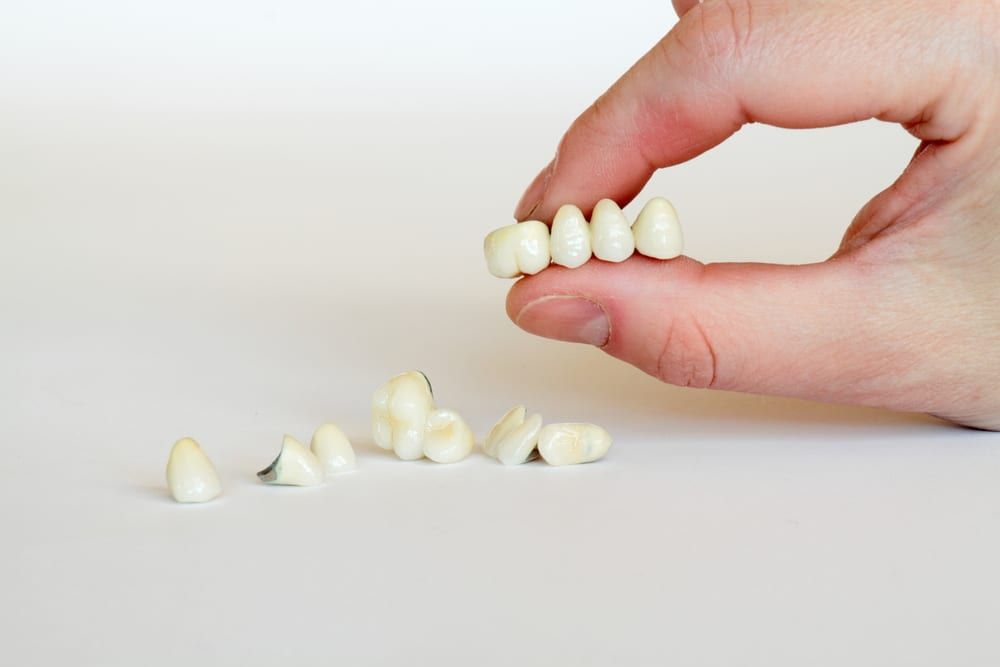
According to the American Academy of Cosmetic Dentistry, nearly 100 percent of Americans believe that a beautiful smile is an important social asset. Your smile is the first impression that others have of you, so why hide it? Cosmetic tooth whitening from Zoom makes it possible for you to whiten your teeth to a beautiful, natural shade of white in as little as one hour. Zoom is an in-office professional tooth whitening treatment that combines a proprietary whitening solution with a specialized light that helps remove surface stains and yellowing. Because the treatment is performed under professional supervision, the solution and treatment time can be adjusted and customized to fit patient needs.
Did you know…
that Zoom tooth whitening has been the choice of more than 10 million people? In fact, Zoom is the most requested professional whitening system in America. In just an hour, patients can achieve better results than are available with over-the-counter whitening treatments that can take several weeks to complete. With Zoom, patients get long-lasting, brilliantly white results that are unavailable with conventional whitening treatments.
Teeth whitening is a cosmetic procedure used to enhance the appearance of the teeth and remove stains on the enamel and in the dentin. If you long for a whiter, brighter smile, Zoom teeth whitening could be right for you. Zoom is only available through dentists, so contact your dentist for more information about using Zoom to get the smile you’ve always dreamed of having.
If you and your dentist determine that you are a candidate for Zoom teeth whitening, you will first need to schedule an appointment to have your teeth cleaned. Once they are free of plaque and tartar, your dentist will place protective coverings over your lips and gums. The Zoom whitening gel will then be applied to your teeth for 15 minutes and a light placed over it to activate the gel. This cycle may be repeated up to four times, after which time your teeth may be lightened by as many as 6 to 10 shades.
Yes. To maintain your whitening treatment results, you’ll need to avoid drinking highly pigmented beverages like red wine and coffee, as these can stain your teeth. You may also wish to switch to a whitening toothpaste that will help remove stains that can accumulate each day. If you receive a Zoom at-home touch up kit, use it to maintain your results according to your dentist’s instructions.

Invisalign® is an orthodontic appliance system used to inconspicuously treat crooked and crowded teeth in adults and teens. This modern take on braces features a system of clear aligner trays that are worn at all times with the exception of during meals and when brushing or flossing. The trays are custom fitted to the teeth, making them virtually unnoticeable when laughing, talking, and eating with other people. Patients receive a sequence of trays, each of which is slightly different than the one before. The aligners provide a slight resistance to the teeth, forcing them to move into alignment over time. With Invisalign®, adults and teens can achieve the smiles they’ve always wanted without feeling self-conscious about the mode of treatment.
Did you know…
wearing Invisalign® is in no way as restrictive as traditional braces? Many adults opt for this system not only because it is discreet, but also because there is no need to change your diet to avoid foods that could damage braces. This is because the Invisalign® system is free of braces and brackets, instead opting for a removable tray that can be taken out prior to meals. Also, Invisalign® fits well into busy adult schedules, as there is no need to attend frequent visits for wire tightening. Most patients simply change to a new aligner tray every couple of weeks.
If you have crooked or crowded teeth that are embarrassing to you or otherwise preventing you from achieving optimal oral health, Invisalign® could be the solution for you. Visit your Invisalign® dentist for a complete consultation to find out if you could benefit from clear orthodontics.
You will wear your aligners nearly all of the time, with the exception of about two hours per day. Invisalign® treatments are different for everyone, but most patients can achieve their ideal smiles within one to two years. During that time, you can expect to make occasional dental visits to monitor your progress.
Following your treatment, you will no longer need to wear Invisalign® trays. However, you will need to wear a retainer each day to help protect your new smile. It is also important to continue visiting your dentist for routine check-ups and twice-yearly cleaning.

Root canal retreatment is a procedure used to clean the canals of a tooth that have already been subject to a root canal. Although most root canals are successful the first time, there are many reasons why a retreatment may be necessary. For example, some patients may have hidden canals that were not identified in the initial procedures, whereas others may experience a new infection caused by a loose crown or damaged filling. In some cases, these complications can occur immediately following a root canal when pain continues to persist and the tooth fails to heal. For other patients, complications can arise many years after an initial root canal. The goal of re-treatment is always the same as the initial root canal: Eliminate all bacteria from the inside of the tooth and seal it so that it is permanently protected from future infections.
Did you know…
that a retreated root canal can allow a natural tooth to last many years or even a lifetime? In fact, the National Institutes of Health confirm that successful treatment is a realistic goal of root canal retreatment. As with any dental procedure, there is no guarantee that retreatment will be a success for every patient. However, the majority of root canal retreatment patients – approximately 70 percent – experience positive outcomes.
If your root canal treatment was unsuccessful or a new infection has occurred in a previously treated tooth, retreatment offers a chance to save your tooth without having it extracted. If many years have passed since your initial root canal, innovative new methods may be available to your endodontist that were not an option during your first treatment. Of course, there is no way to know whether retreatment is right for you without first consulting with your endodontist.
If you determine that retreatment is right for you, your tooth will be reopened so that the filling may be removed from your tooth. Special instrumentation will be used to identify hidden canals or areas of the tooth that could be harboring an infection. These areas will be cleaned out and refilled. You’ll then return to your dentist for a crown or other type of restoration.
As with your first root canal, your retreatment will require you to avoid chewing or biting with your treated tooth until you can return to your dentist for a restoration. You may also experience some discomfort following your treatment. These usually subside within a few days, but contact your endodontist if pain persists or worsens.

Tooth extractions are routine dental procedures used to remove decayed, damaged or otherwise problematic teeth. Dentists usually make every effort to preserve natural teeth, although sometimes an extraction is necessary. Although the procedure is performed in a dentist’s or oral surgeon’s office, it is considered surgery. Depending on which teeth are removed, they may be replaced with a dental implant or another oral prosthetic.
There are several reasons why you could need a tooth extraction.
The most common cause of tooth extractions is severe tooth decay and cavities. However, many patients also undergo extractions for impacted teeth – particularly wisdom teeth. Other causes for extraction include advanced periodontal disease, cracked teeth, and teeth that are severely malformed. Although many circumstances that require extraction are unavoidable, some could be prevented with regular visits to the dentist for exams and cleanings.
Only your dentist can tell you if you need a tooth extraction. However, you may be a candidate for the procedure if one or more of your teeth are decayed so severely that a filling or others restoration is not a possibility for treatment.
If you and your dentist decide to extract one or more teeth, you will be scheduled to return for oral surgery at a later date. You will be given a local anesthetic to prevent pain during the procedure, and you may be prescribed medications to help manage pain in the hours following your extraction. Depending on the nature of your extraction and other factors, such as whether your teeth are impacted, you may also be sedated or given general anesthesia during your procedure.
Post-operative care following a tooth extraction is essential for healing and preventing complications. You will be instructed to avoid certain foods and also keep the surgical site clean at all times. If you are prescribed an antibiotic, it is important that you complete the course of treatment to prevent infection. Finally, you may be advised to avoid smoking or drinking through a straw, as doing so may delay the healing process and cause a condition known as ‘dry socket.’

Dentures are an effective and affordable way of replacing missing teeth. Composed of a durable plastic resin and sometimes porcelain, both partial and full dentures can be fabricated to look and feel natural. Today’s dentures are custom-fit to make it possible to eat foods with confidence and speak articulately. Depending on the patient’s preferences and budget, dentures can be crafted for maximum comfort and fracture resistance backed up by limited warranties.
Did you know…
that more than 60 percent of American adults are missing one or more teeth? Approximately 10 percent are missing all of their teeth – requiring a prosthetic solution that will restore function and aesthetics to their smiles. Many of those dental patients choose partial or full dentures to replace missing teeth. In fact, it is estimated that 35 million Americans currently wear partial or full dentures – a number that is only expected to rise as baby boomers begin to reach retirement.
You may be a candidate for dentures if you are missing one or more teeth and are in need of an affordable prosthetic solution. Most denture wearers find that partial and full dentures can restore much of their original tooth function – not to mention create a beautiful, natural-looking smile. To find out if dentures are right for you, schedule a consultation with your dentist.
If you have any decayed or damaged teeth that need to be removed, they will be extracted before your dentist takes a mold of your remaining gum structure, as well as the roof of your mouth. This mold will be sent to a dental lab for denture fabrication. When the completed dentures are completed, you will return to your dentist for a final fitting.
Yes. Dentures are removable prosthetics that will need to be cleaned and brushed daily. You should also brush your gums daily to prevent infections caused by bacteria. Your dentures should be kept in water when they aren’t in use to prevent them from warping. Keep in mind that it may take some time to adjust to dentures as you learn how to use the muscles in your cheeks and tongue to keep them in place. But over time, you should begin to feel more comfortable with your new prosthetics.

Dental implants are surgical-grade root devices that support permanent tooth prosthetics that are manufactured to last a lifetime. These artificial roots are anchored in the bone beneath the gums where they become fused into the jaw. A crown is mounted atop the implant for a long-lasting and natural looking smile. Many dentists and patients prefer dental implants because they offer the same function as natural teeth and also help prevent bone atrophy in the jaw. Dental implants may be used to replace a single missing or damaged tooth or to restore an entire smile.
Did you know…
that approximately 30 million people live with no natural teeth in one or both jaws? But more and more dental patients are opting for dental implants as a means of tooth replacement. The American Academy of Implant Dentistry reports that 3 million people currently have dental implants – a number that is rapidly growing by about 500,000 per year. Modern titanium implants were first developed in the 1950’s, but archeologists have determined that ancient Egyptians and Mayans were the first cultures to implant artificial teeth.
You may qualify for dental implants if you have missing, broken or severely decayed teeth and are in relatively good overall health. The only way of determining your eligibility for implants is to consult with an oral care provider to identify whether you have adequate bone support and healthy gums that will support the new tooth structure.
The placement of dental implants is a multi-step process that typically takes between 6 and 9 months to complete. It begins with a surgical procedure during which a titanium rod is placed where a previous natural tooth root once was. The gums are sutured shut over the implant, where is will stay for several months while it heals and begins fusing with the surrounding bone. Due to the nature of implant placement and its average procedure time of between 1 and 2 hours, you’ll be sedated and/or anesthetized for the duration of the treatment. At the conclusion of the healing period, you’ll return to be fitted for permanent crowns and have them placed.
It is normal to experience some discomfort, including bruising and swelling following a dental implant procedure. However, inflammation and pain may be managed with over-the-counter medications, hydrocodone, or codeine. You may be asked to eat only soft foods for approximately 2 weeks until the surgical site heals.

Dental crowns and bridges are custom-fitted tooth prosthetics that are used to replace or restore damaged or missing teeth. Crowns – also known as caps – are fixed over the surfaces of natural tooth structures or dental implants. Bridges are used to fill in the gaps left by missing teeth and are anchored in place by the natural teeth or crowns nearest the empty space. Both crowns and bridges are non-removable and must be cemented in place by a licensed dentist. Patients who get crown or bridges to restore their smiles achieve both the function and appearance of natural, healthy teeth.
Did you know…
that the Etruscan civilization were the first to use crowns as a means of restoring damaged teeth? In fact, the materials they used – ivory, gold, and bones – were still the standard in dentistry as recently as the 20th century, when porcelain crowns were first invented. Today, crowns and bridges are customized specifically for the patient’s bite and can usually be placed in as little as one or two dental visits. With proper cleaning and regular dental check-ups, crowns and bridges can last many years, or even a lifetime.
If you have a tooth that is damaged or decayed, but still intact, a dental crown may be right for you. If your tooth is missing, but its former position is surrounded by other tooth structures, a bridge may be the solution for you. Schedule an office consultation to determine whether you could benefit from crowns or bridges.
If you are a candidate for a crown or bridge, your teeth will be reduced to ensure a proper fit. An impression will then be taken of your bite and used to fabricate a mold for the crown or bridge. If you are choosing porcelain prosthesis, its color will be matched to the natural shade of your other teeth. If a dental lab is making your crown or bridge, you may be fitted with a temporary restoration until the permanent one is ready for placement.
Your teeth will need time to heal following the crown and bridge placement process, so it is normal for you to experience some sensitivity – especially to hot and cold. Additionally, you may experience soreness in the gums surrounding your restorations, though this is usually manageable with ibuprofen and should subside within a few days.

Dental emergencies occur often in young patients. Though they require urgent treatment, it is important to remain calm and take immediate action. Dental emergencies are any trauma or condition that requires immediate attention. Examples include:
Did you know…
that more than 1 in 3 kids will experience a dental emergency during childhood or adolescence? Often, these dental emergencies are caused by injury to the teeth, gums or soft tissues of the mouth. Though a dental trauma can occur at any point during childhood, children are most susceptible to them during the curious toddler years and during the pre-teen and adolescent years, when kids begin to participate in more vigorous sports.
Pediatric dental emergencies always happen when they are least expected. Preparation is essential for maximizing the outcome in an actual emergency. Start by storing the phone number of your child’s pediatric dentist in your phone for easy access. You can also take steps to prevent an emergency. For example, we recommend limiting your child’s exposure of hard foods and having a mouth guard custom-made for use when your child is participating in sports.
If your child has an injury or pain affecting the teeth or gums, contact a pediatric dentist immediately. Visit your local emergency room if your child has uncontrolled bleeding or has suffered a head trauma.
If your child’s tooth is completely dislodged from the gum and jaw, retrieve the tooth immediately, being careful not to touch the root. Rinse it gently in clean water and place it in a glass of milk. If you have an older child, place the tooth gently back into the socket. Get to an emergency dentist immediately, as time is a critical factor in saving a lost tooth.

Porcelain fused to metal, or PFM restorations have been a standard in restorative dentistry for more than three decades. During that time, dentists around the world have adopted PFM crowns and bridges due to the versatility for use, as well as their ability to be matched to surrounding teeth. PFM crowns provide an excellent balance between resilience and esthetics. The underlying metal portion of the restorations provides long-lasting durability while the porcelain outer layer delivers a natural-looking appearance.
Did you know…
Dental crowns may be necessary for a number of reasons. They include:
- To restore the remaining tooth structure following a root canal
- To protect a tooth that is broken or damaged.
- To restore a decayed tooth with too much damage to support a new filling
- To anchor a dental bridge
- To disguise tooth discoloration that has not responded to whitening treatments
You may be a candidate for PFM restorations if you are looking for a strong, but aesthetically appealing crown or bridge. PFM is especially beneficial to patients who suffer with bruxism that could lead to the deterioration of all-ceramic restorations. To find out more about porcelain-fused-to-metal restorations, contact your dentist to schedule a consultation.
You’re tooth will be prepared for your new [city] PFM restoration as your dentist gently removes the outer layer for bonding. An impression of your teeth will be made and sent to a dental lab for fabrication of a PFM restoration in a shade that matches your natural teeth. Finally, the restoration will be sent back for placement and permanent bonding.
It is normal to experience some sensitivity to hot and cold temperatures after having a PFM restoration placed. However, this should subside, as should any soreness caused by tooth preparation. Be sure to follow the instructions provided to you by your dentist, and continue brushing and flossing on a daily basis to keep your PFM restoration clean and well cared for. Tell your dentist if your PFM crown or bridge causes you any pain of any kind or if it comes loose.

Your smile is the first impression that others have of you, so it makes sense that you would want it to be bright, white and healthy. According to the American Academy of Cosmetic Dentistry, more than 99 percent of all American adults believe that a smile is an important asset for social situations. Perhaps that is why so many patients are electing cosmetic dental procedures to improve their smiles and boost self-confidence.
Did you know…
that cosmetic dentistry is more than just teeth whitening? Your cosmetic dentist is also capable of transforming your smile’s shape, color, alignment, as well as filling in gaps and discreetly restoring decayed or damaged teeth with tooth-colored fillings. In fact, modern advancements in cosmetic dentistry have made it possible for patients to achieve nearly perfect teeth with cosmetic enhancements and restorations that are virtually undetectable to friends, family and peers.
You may be a candidate for cosmetic dentistry if your healthy teeth have imperfections that you would prefer to be changed to enhance the appearance of your smile. It is important to recognize that esthetic dental treatments are not meant to alter your overall appearance, but rather to provide a positive change that compliments the health and natural appearance of your teeth. If you think cosmetic dentistry is right for you, contact your cosmetic dentist today to schedule a consultation.
Due to great strides in dentistry, cosmetic, restorative and general dentistry can overlap in a single visit. You can expect your cosmetic dentist to discuss health implications, as well as esthetics at your appointment.
There are many types of cosmetic treatments available, from in-office teeth whitening to total smile make-overs. The types of treatments available to you will depend on your overall goals, but may include professional whitening, tooth-colored fillings, bonding, crowns, veneers, or dental implants.
You will receive special care instructions following your treatment. For example, if you have your teeth whitened you should avoid highly pigmented beverages and foods for several days to prevent staining. On the other hand, a dental implant make-over may require a significant amount of down time, as well as a temporary, but limited diet.
